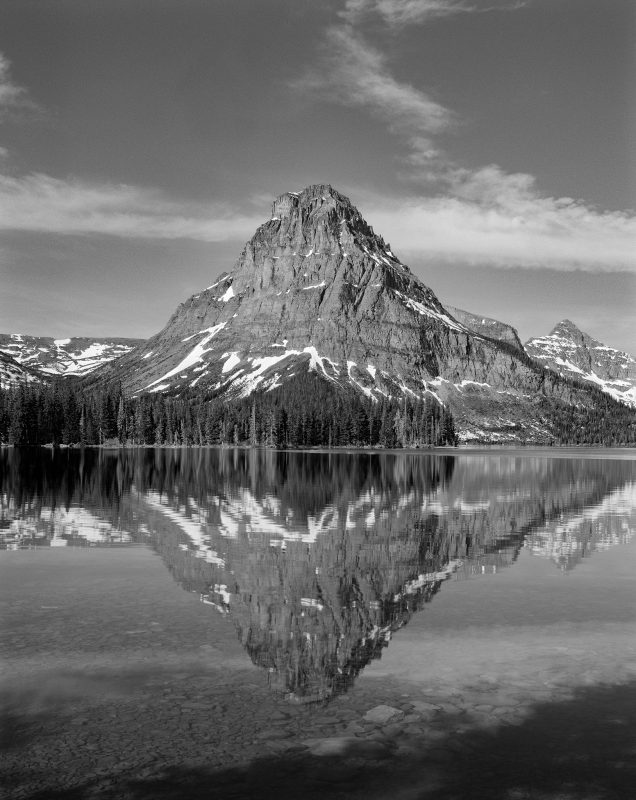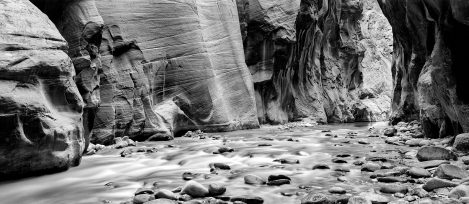An Interview with Jon Ortner

Jon Ortner
One of the world's leading nature and scenic photographers, Jon Ortner is the acclaimed author of eight internationally published fine-art books on such wide-ranging topics as the icons and architecture of Manhattan, the beauty of the human form, the sacred places and people of Southeast Asia, and the landscapes and geological wonders of the American Southwest. Ortner was born in Great Neck, on the north shore of Long Island. Throughout his youth he was fascinated with insects, plants and animals and became an avid naturalist and wilderness hiker. He continued his studies in ecology, eastern philosophy, and photography during his university years. In 1978, he moved to Manhattan to start a commercial photo studio with his wife and business partner, Martha McGuire. They divide their time between exotic locations around the world and assignments for corporate clients. Ortner's photography and stories have been published in numerous magazines such as National Geographic, Outdoor Photographer, Travel & Leisure, GEO, and Architectural Digest.

Charlotte Parkin
Head of Marketing & Sub Editor for On Landscape. Dabble in digital photography, open water swimmer, cooking buff & yogi.
Visions of Paradise: American Wilderness" presents a collection of black-and-white photographs by Jon Ortner, offering a thoughtful exploration of America’s wild landscapes. An experienced hiker and long-time observer of the natural world, Ortner captures the scale, textures, and quiet power of these places through the timeless medium of film. This large-format book gathers his work into a focused tribute to the American wilderness, reflecting both its visual majesty and enduring significance.
How did your childhood on Long Island shape your interest in the landscape?
I was given my first butterfly net when I was only 5 years old. I started exploring the North Shore of Long Island, which at that was a paradise of ancient forests, and abandoned estates. I would wander around the overgrown, walled Italian gardens, crumbling fountains, old wishing wells, and abandoned greenhouses. I spent my time collecting butterflies and examining salamanders, turtles and frogs. I was an avid naturalist and tried to learn the scientific names of everything I saw, at a very early age. By the time I was 12, I was going into New York City, to the American Museum of Natural History, and became a member of the Jr. Entomological Society, which met in the cavernous offices of Alice Gray, a talented scientific illustrator, who worked creating natural history exhibitions for the museum. It was there that I met many other young naturalists, collectors, and budding scientists. All of us experts in climbing fences, and exploring the abandoned wild places around us.
My first paying job was as a Page, in the beautiful library of my hometown. I fell in love with books and research, and became an avid collector of rare photography books, especially those on exploration, and the love of nature. So, for much of my life, I have revered authors who have explained the scientific significance, and irreplaceable value of wild places. These included Edwin Way Teal, Edward Abbey, Terry Tempest Williams, Gretel Ehrlich, and Edward Ruess, I have read, and been inspired by their writings that describe and explain the love of wilderness that I have felt my entire life.
You attended the University of Kansas, where you studied Photography, Eastern Philosophy, Systematics, and Ecology. How did these experiences shape your photography?
Throughout my youth I had been reading, and dreaming about the jungles and lost cities of Asia. As I matured, I thought that I would become either an entomologist, or a zoologist. When I arrived at University, I got my first Nikon Camera, and started photographing both nature, and landscapes. I was soon privileged to meet and study with a brilliant professor named Alphonse Verdue. He was a philosopher, author, Buddhist scholar, and one of the foremost experts on Sanskrit, the classic language of India, in the world. His courses introduced me to the deeply spiritual philosophies of Hinduism and Buddhist, and how these great meditative religions evolved from the sacred Himalaya, highest mountain in the world.
Right after my freshman year, after reading the book Siddhartha, by Hermann Hesse, I decided to see for myself the wonders of spiritual India and Nepal, and it was those early experiences, while trekking on pilgrimage to Amarnath Cave in the high Himalaya of Kashmir, along with thousands of Siva Ascetics, that sparked my lifelong passion for photography of Asia, and the Himalaya, and the extraordinary religious culture that has evolved there.
Tell me about the photographers or artists that inspire you most. What books stimulated your interest in photography, and have your tastes developed over time?
Some of the first photographers (and their books) that inspired me were: Burma, Ceylon, Indo-China by (the black in white photographer) Martin Hurlimann, Angkor, Art & Civilization, by Bernard Groslier, & Jacques Arthaud, and the work of Vittorio Sella.
With black and white photography nature displays its majesty and poetic beauty by way of contrast, shape and form. I have always loved beauty.
In 1978, you relocated to Manhattan to establish a commercial photography studio alongside your wife and business partner, Martha McGuire. What initially drew you to commercial photography, and could you share more about your experience running the studio?
When I first moved into New York City with my wife Martha, I knew that it would be difficult to finance our continued expeditions to places such as India, Nepal, Bhutan, Myanmar, Laos and Cambodia. I immediately started photographing the city and its skyscrapers, and that connected me to the world of New York City real estate, especially to developers who were building the newest and most beautiful skyscrapers in America. I started photographing for developers such as Brookfield, SL Green, Hearst, and Tishman Speyer.
The marketing for their new buildings had robust budgets, which allowed us to make good money fairly quickly. This enabled us to spend 3-4 months every year trekking in the Himalaya of Nepal, Ladakh, and Bhutan, or exploring the ancient, lost cities of Asia such as Angkor, Bagan, Sri Ksetra, Mrauk-U, Prambanan, and Borobudur, in the wilds of Cambodia, Myanmar, Laos, Thailand, Bali and Java.
Your photography in Asia has merged an interest in the landscape and philosophy. What inspired that interest and can you tell us more about the books you’ve created around it?
I have always had boundless curiosity and an insatiable thirst for knowledge about people and places. That, combined with a deep-seated reverence for nature’s exquisiteness, manifested itself in my photography. In 1979, with a creative intellect on fire and the urgent purpose felt by dedicated artists, Martha and I embarked on a photographic and spiritual journey to record and celebrate the world’s most remote and astonishingly beautiful sites.
The exceptionally produced, large-format photography books emerging from these singular experiences, have for years, and for reprint after reprint, ignited the imaginations of thousands of readers. They include Where Every Breath Is a Prayer: A Photographic Pilgrimage into the Spiritual Heart of Asia, Angkor: Celestial Temples of the Khmer Empire, and Buddha, each one were multi-year projects, that strived for thematic, compositional, and photographic artistry, and were complimented by my deeply personal and scholarly writings on Hindu and Buddhist art, spiritual pilgrimage, and the role of sacred places in our lives.
Tell us about the background of the book and the project. Where did it all begin?
In 2005, I turned my passion, creativity, and panoramic cameras on the unique, breathtaking scenery of the Colorado Plateau in a five-year odyssey of discovery deep into the deserts and canyons of the American West, which included trekking to isolated and nearly inaccessible slot cxanyons, and to secluded and sacred sites on Dine and Hopi Tribal Lands. This tenacious pursuit for photographic perfection culminated in the award-winning, Canyon Wilderness of the Southwest, a widely distributed book published in three edition sizes, and which esteemed documentary filmmaker Ken Burns has lauded as “…an indescribably sublime book, a testament to the power of our saved and sacred places to transform our lives, rearrange our molecules and make of us all, as John Muir would say, ‘kindred spirits.”
On the heels of that fulfilling project I started working on Visions of Paradise: American Wilderness, which is the culmination of more than 15 years of black-and-white, large-format photography, paying tribute to America’s remaining unspoiled wild places.
The opening quote in the book is: “If a person is very fortunate, in a perfect place under conditions that may never occur again … perhaps on a mountaintop with the late sun breaking through the clouds in diffused radiance … eternity may cease its flow, the world pause, for one incomprehensible moment … an instant in time to be treasured forever.”—Ward J. Roylance, The Enchanted Wilderness
Can you tell us more about why you chose this quote and its importance to you?
When we first started photographing in the American West, we had the good fortune to visit Capitol Reef National Park, in Utah. Martha and I explored extensively and experienced the truly inspirational landscapes of the Cathedral Valleys. Although we had traveled widely throughout Asia and the Himalaya, and had trekked through the wonders of the highest mountains and deepest gorges on the planet, we were astounded, and deeply moved by the otherworldly landscapes we photographed in The Cathedral Valley. We returned several times over the years, hardly ever seeing any other people for most of the days we spent there. For me, it became one of my favorite places in the world. Then I came upon a book titled, The Enchanted Wilderness, by Ward J. Roylance, who lived in Torrey, Utah, and explored the vast wilderness of Capitol Reef for many years. He wrote elegantly about the dramatic monoliths, and the changing light and weather conditions, that made Capitol Reef a sublime, high desert paradise. We then realized that there were other people, who felt the same as we did, and who literally worshipped the sacred landscapes of Capitol Reef, and the astounding and dramatic beauty that could be seen and experienced there.


